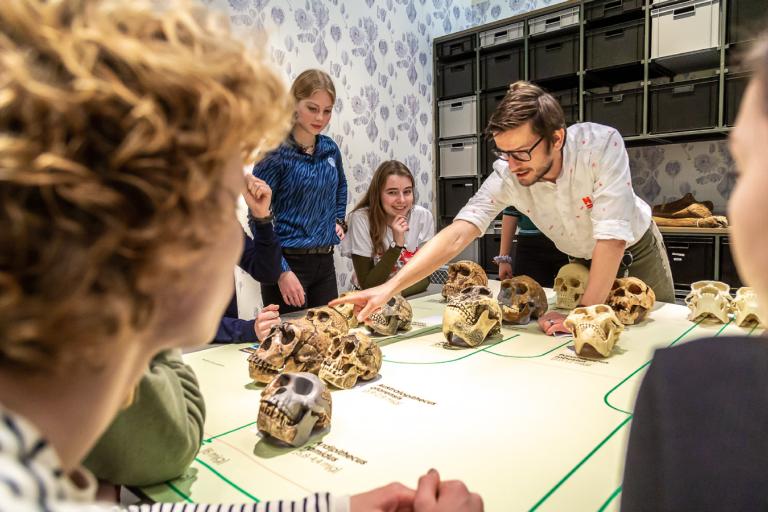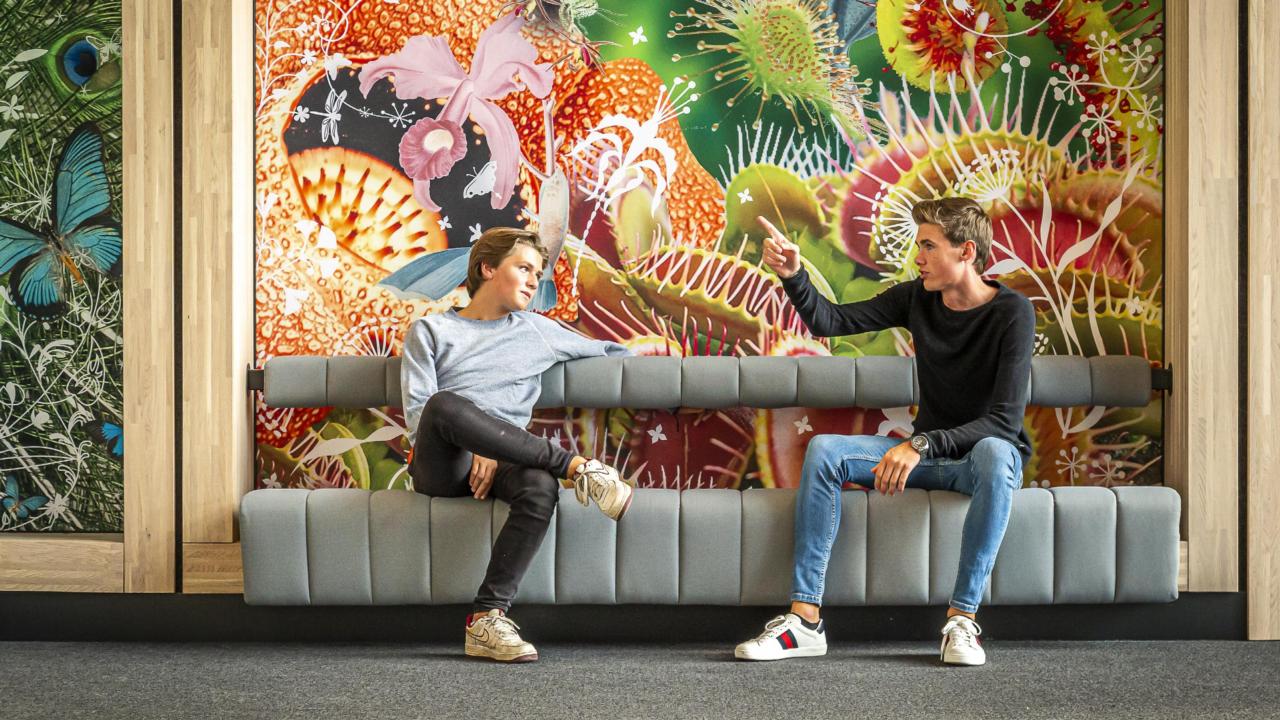
Build your own lines of evolution and family trees. What can fossils tell you about evolution and the way animals used to live? Compare and contrast real fossils and models of molars, legs and skulls from 50 million years ago up to the present day. How have horses, elephants and humans evolved through the ages and why?
Everything you need to knowin a row
- Workshop
- Senior general secondary education Years 4 and 5, pre-university education Years 4–6
- Length: 120 minutes
- Number of pupils: no more than 36
- Areas: the "Early humans" and "Ice age" galleries, "Workshop The past"
- The school supplies: one supervisor for every 20 pupils
- Naturalis supplies: two educational assistants
- Objective: pupils see how horses, elephants and humans have evolved through the ages. They ponder what caused these changes. They discover what knowledge scientists glean from fossils and find out how the body of knowledge about the evolution of organisms has grown.
- Keywords: evolution, fossils, geological time scale, genealogy, science, molars, skulls, bones
Course of the programat the museum
The program consists of two parts. The schedule given below is an indication only.
0-45 minutes: research in the “Past” workshop
Pupils will be given sets of fossilized molars and legs from horse-like and elephant-like animals. They will then use a determination table to identify the molars or legs and label each fossil with the species name and its age. The pupils will also get a fold-out map with a timescale from the Paleocene to the present. The map shows how the tropical forests of the past slowly gave way to larger expanses of grasslands. Pupils will arrange the molars and bones on large family tree posters. By doing so, they can observe how the molars got bigger and developed taller crowns and more ridges. They will also see how horses’ legs got longer and longer and gradually “lost” their toes. The groups will discuss possible reasons for these changes together.
45-75 minutes: in museum
Pupils will spend 30 minutes exploring the “Ice Age” and “Early Humans” galleries on their own. A suggestion card will help them find the most exciting highlights and reflect on these remarkable fossils. They will discover ice age animals – like a complete mammoth skeleton, a giant deer and a cave bear – but also the world-famous skull cap, molar and femur of Homo erectus, along with a shell carved by this early hominid, all found by the Dutch physician Eugène Dubois.
75-120 minutes: in the “Past” workshop area
Back in the workshop area, pupils will investigate the process of human evolution. They will compare the skulls of different hominids. They identify primitive and modern characteristics and arrange the skulls according to a family tree. What can they see happening over time? Why did our cranial volume get bigger and our zygomatic arches smaller? The pupils will learn about different kinds of stone tools, from chopper to ax, and discover how humans became increasingly skilled in fashioning tools.
Booking infoprepare your visit
Everything you need to know about practical matters such as parking, lockers and house rules.
